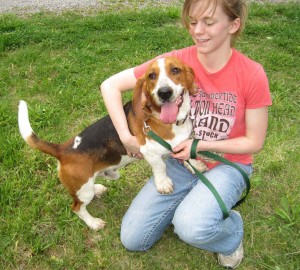Dear Adam,
Hi, I have a 3 year-old Australian Cattle Dog. She is a wonderfully obedient dog, canine good citizen certified and everything. She is very obedient and good-natured to people, however she is very dominant when it comes to other dogs.

Recently I have been having problems with her snapping at other dogs if they come up to her while she is on a leash. This is not a problem if I tell her to sit and the other dog stays a normal distance away.
She doesn't like dogs invading her space and standing over her (she is only 35 pounds, so most dogs tower over her). I call it her “Napoleon Complex”.
I tried to work on the problem by putting a muzzle on her and setting up situations so I can correct her, but she realizes that she is in no position to show the other dog who is boss while muzzled and refrains. We have recently started therapy dog training classes, which she is doing very well in.
Like I said she is a perfect angel around people. In a therapy situation she is unlikely to encourage other dogs on or off leash who will be allowed to be in a position close enough to upset her, however, if some instance did occur, I would feel uncomfortable with her snapping at another dog.
In most instances, I can prevent a situation where she would be tempted to snap from occurring, however, there are some instances that can't be avoided.
Do you have any suggestions? I'm debating whether I should discontinue her therapy dog classes.
Thank You,
Katie
Dear Katie,
This is really more of a handler issue.
It's your responsibility to NOT LET other dogs invade her space.
Now, you can correct her for the aggression – but at the same time, you must show her that she can trust you, and that you will not let strange dogs from another pack wonder up and get in her face. This is the job of the pack leader – to protect the pack.
You're not doing your job by letting strangers off the street walk up and get too close. I would recommend a walking stick or a stun gun.
As for the therapy dog training – I would recommend that you continue, but without seeing the dog in person, this will ultimately be a judgement call which you must make for yourself and your dog.

That's all for now, folks!
Adam


